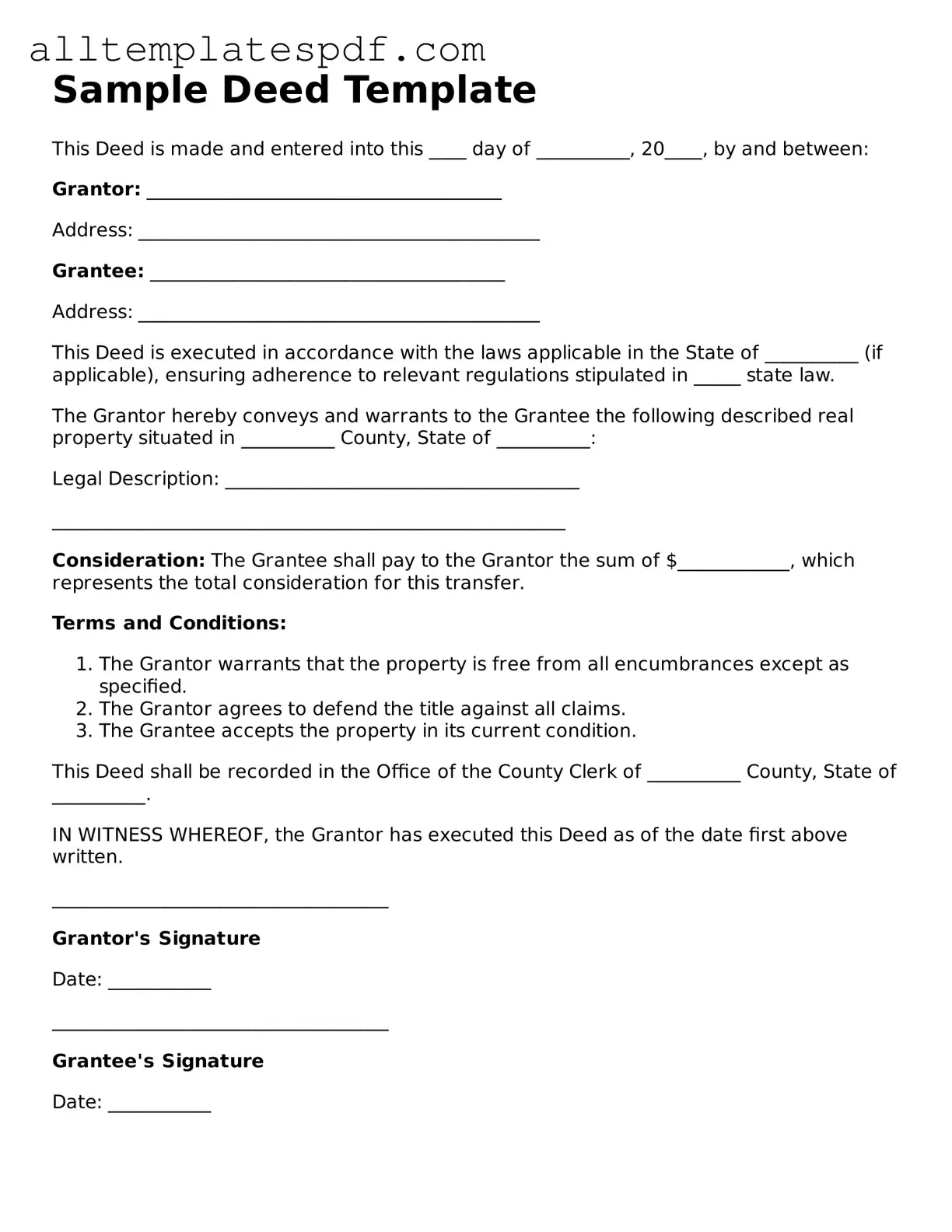When filling out a Deed form, it’s easy to make mistakes that can cause problems later. One common error is providing incorrect names. Ensure that the names of all parties involved are spelled correctly and match the names on legal identification. Even a small typo can lead to significant complications.
Another mistake is failing to include all necessary parties. If a property is jointly owned, all owners must be listed on the Deed. Omitting someone can create legal issues and disputes down the line. Always double-check to confirm that everyone who has an interest in the property is included.
People often forget to provide the correct property description. A vague or incorrect description can lead to confusion about which property is being transferred. It’s essential to use the legal description found in previous Deeds or property records to avoid any ambiguity.
Some individuals neglect to sign the Deed. A Deed is not valid unless it is signed by the grantor. Remember, all signatures must be original. Electronic signatures may not be acceptable in some jurisdictions, so it’s best to check the requirements.
Another frequent mistake is not having the Deed notarized. Most states require a notary public to witness the signing of the Deed. This step adds an extra layer of authenticity and can prevent future challenges to the validity of the document.
People sometimes overlook the need for proper witnesses. Depending on the state, you may need one or two witnesses to sign the Deed. Failing to have witnesses can invalidate the document, so it’s crucial to understand your state’s requirements.
Lastly, many forget to record the Deed after it is completed. Recording the Deed with the local government office ensures that the property transfer is officially recognized. This step protects the new owner’s rights and helps prevent disputes over ownership in the future.
